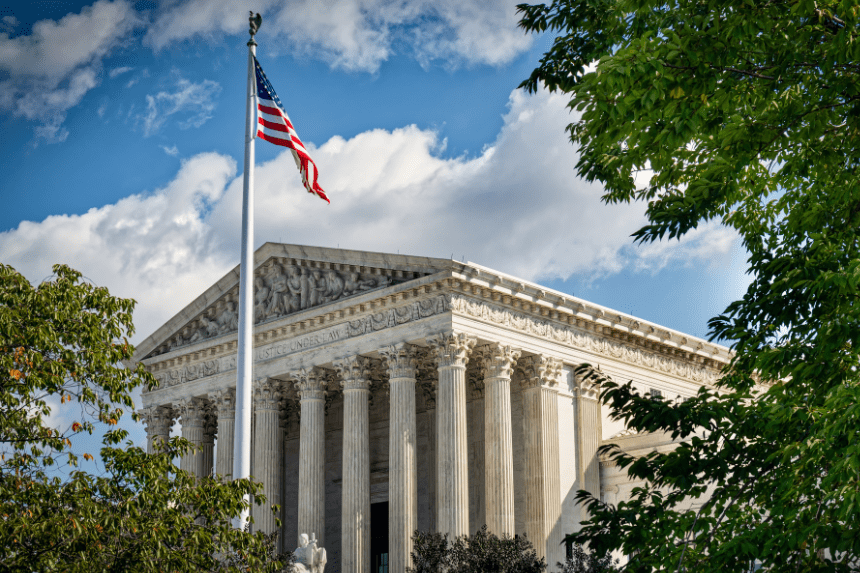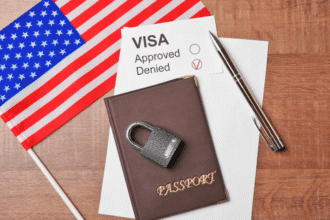The U.S. Supreme Court has temporarily lifted a lower court’s ban on the contentious federal immigration raids in Los Angeles, ruling that the operations may now go forward. A major advancement in continuing immigration enforcement efforts, the 6-3 ruling permits Immigration and Customs Enforcement (ICE) officials to make stops without “reasonable suspicion.”
The Trump administration, which has placed a high priority on strict immigration enforcement, is considered as having won this judgment. For the time being, ICE has wide latitude to resume workplace and street-level activities throughout the Los Angeles region while the case is still pending legal review.
The decision offers guidance on how the court may handle upcoming issues pertaining to civil liberties and immigration policy, even though it does not definitively resolve the case.
Why Was the Lower Court Order Lifted?
The last ruling by the federal judge prohibited ICE from detaining anyone on the basis of their race, language, or occupation. The Fourth Amendment, which forbids arbitrary searches and seizures, was one of the fundamental rights that the court determined to have been violated by these actions based on “substantial evidence.”
The conservative majority of the Supreme Court, however, believed that the limitations imposed by the lower court were excessive. According to the Court’s ruling, ethnicity may be taken into account in conjunction with other pertinent considerations, but it is not a reason for suspicion on its own. In anticipation of a final decision, this allowed the administration to resume its enforcement efforts. Here is the link to our article on Padilla Immigration Handcuffed.
What Does the Ruling Mean for Los Angeles?
ICE officials are free to carry out immigration raids throughout Los Angeles now that the order has been removed. This involves focusing on particular areas, such building sites, bus stops, and other places where manual labor is performed. Local lawmakers and community leaders are extremely concerned about the decision.
The governor of California and the mayor of Los Angeles publicly denounced the ruling. They contend that working-class immigrant neighborhoods are disproportionately impacted by the raids, which also erode public trust. Community advocacy organizations worry about a wider chilling impact on immigrant cooperation with local authorities as well as an increase in racial profiling.
What Is the Legal Basis for the Challenge?
Immigration advocacy organizations filed the lawsuit. They contend that it is illegal profiling for ICE to utilize a person’s race, language, and occupation as determining criteria when stopping them. Additionally, they contend that by preventing access to legal counsel while in custody, the practices infringe upon constitutional rights.
Findings that numerous individuals, including U.S. citizens, had been detained without valid legal justification served as the basis for the first restraining order. The advocacy organizations also cited cases in which people were stopped only for being in specific places, such retail establishments or car washes.
Notwithstanding these arguments, the Supreme Court determined that the federal government would probably win the underlying case, which supported the order’s temporary removal. Here is the link to our article on Immigration Workforce Impact.
Is Federal Deployment Expanding Beyond LA?
Yes. The Trump administration has indicated plans to expand immigration raids and federal law enforcement activity to other major cities. Washington D.C. has already seen an increased presence of National Guard troops and federal agents. Trump has also hinted at deployments to Chicago, citing public safety concerns.
This pattern reflects a broader federal strategy of bypassing state and local authorities in immigration enforcement and crime reduction. Critics argue it undermines local governance and targets vulnerable populations without due process.
A separate federal ruling has deemed Trump’s previous National Guard deployment in California illegal. However, the administration remains defiant, accusing the judiciary of interfering with executive authority.
Final Thoughts
A larger legal and political struggle over immigration enforcement in the US is reflected in the Supreme Court’s ruling to permit immigration raids in Los Angeles. Although the decision is only temporary, it shows the court’s preference for federal authority when it comes to immigration issues. The decision’s long-term effects could influence how enforcement is conducted across the country as long as legal challenges persist. The controversy surrounding immigration sweeps is far from finished, with communities split and constitutional rights at risk.








